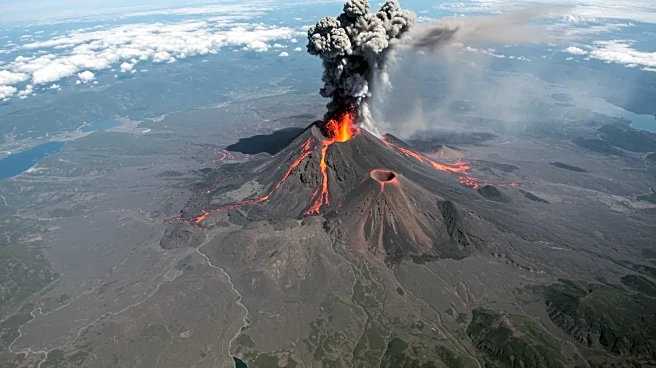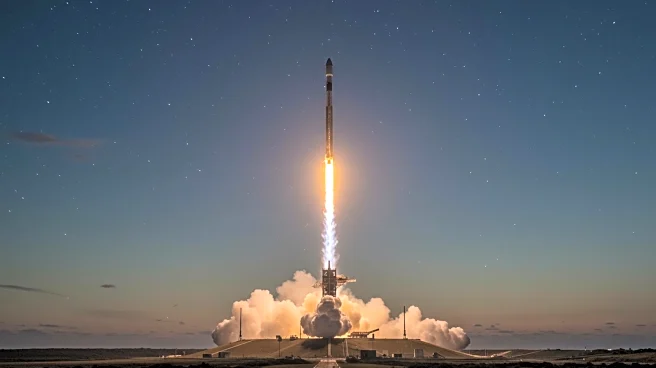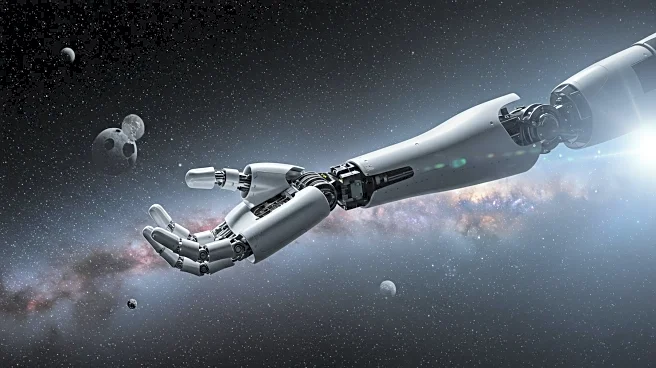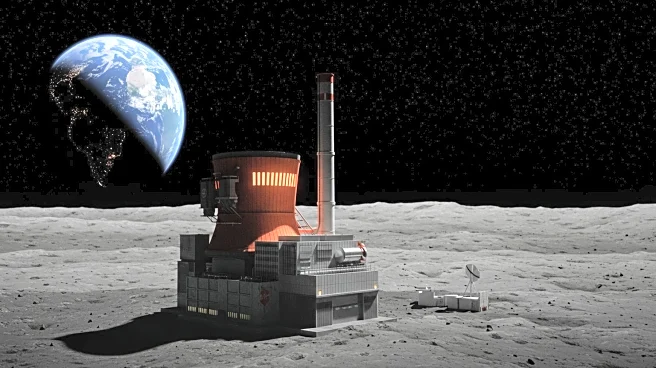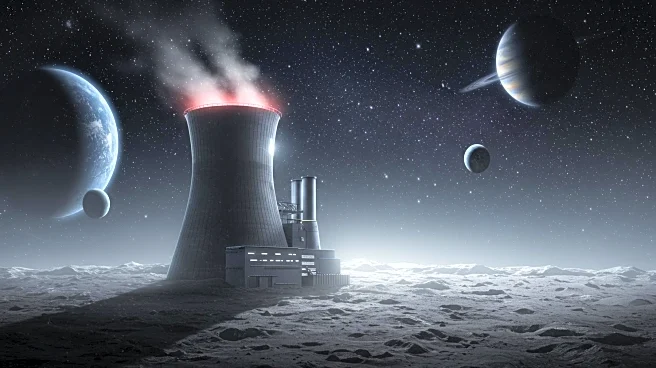What's Happening?
An astronaut aboard the International Space Station captured a striking photograph of the Kamchatka Peninsula in Russia's Far East. The image, taken on May 29, 2025, highlights the region's dramatic topography, including the Klyuchevskaya Sopka, the tallest peak at 4,754 meters. This area is part of the Klyuchevskoy Volcanic Group, known for its frequent tectonic activity as part of the 'Ring of Fire.' On July 29, 2025, a significant earthquake with a magnitude of 8.8 struck approximately 380 kilometers south of this volcanic group, coinciding with increased volcanic activity, including eruptions from Klyuchevskaya Sopka and the long-dormant Krasheninnikova volcano.
Why It's Important?
The Kamchatka Peninsula's geological activity is of significant interest to scientists and the public due to its implications for understanding tectonic and volcanic processes. The recent earthquake and volcanic eruptions highlight the dynamic nature of the Earth's crust in this region, which can have broader implications for global geological studies. Such events can also impact local communities and ecosystems, emphasizing the need for ongoing monitoring and research. The images captured by the ISS provide valuable data for scientists studying these phenomena, contributing to a better understanding of natural disasters and their potential impacts.
What's Next?
Continued monitoring of the Kamchatka Peninsula is expected, with scientists likely to focus on the relationship between seismic activity and volcanic eruptions. The data collected from the ISS and other sources will be crucial in predicting future events and mitigating risks to local populations. Additionally, the findings may inform global strategies for disaster preparedness and response, particularly in other regions within the 'Ring of Fire.'
Beyond the Headlines
The Kamchatka Peninsula's activity underscores the interconnectedness of geological processes and the importance of international collaboration in scientific research. The data from the ISS not only aids in understanding local phenomena but also contributes to global knowledge about tectonic and volcanic activity. This collaboration highlights the role of space-based observations in advancing Earth sciences.


